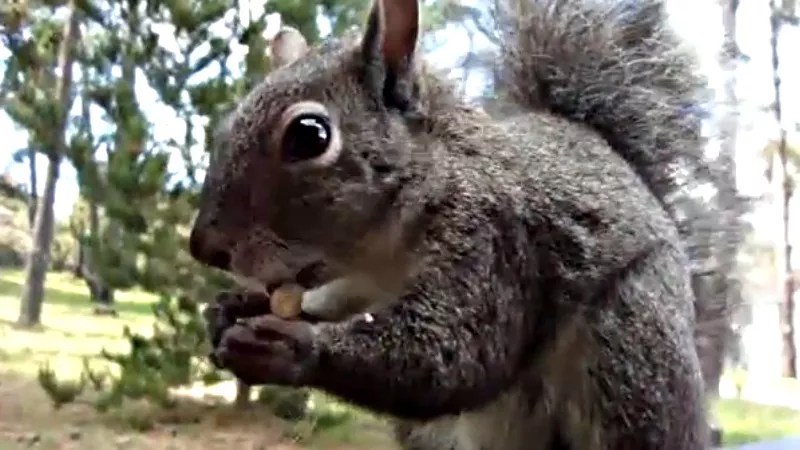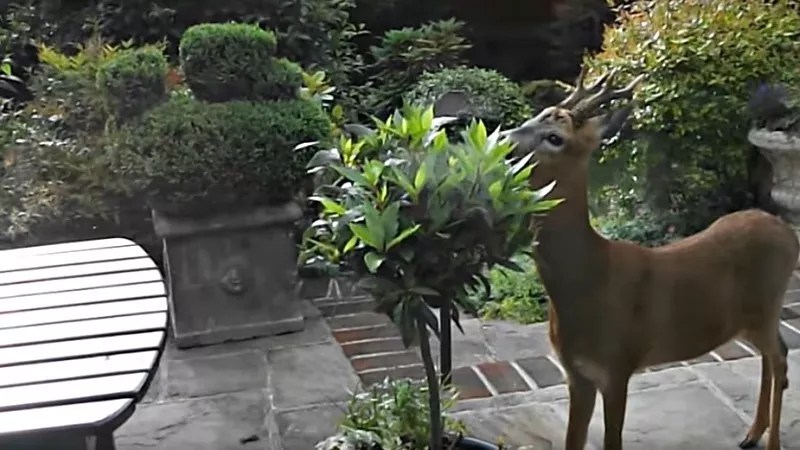

Audio By Carbonatix
Editor’s note: Dr. Kevin Fitzgerald, a veterinarian at Alameda East Veterinary Hospital as well as a star of two past Animal Planet programs, Emergency Vets and E-Vet Interns, and a regular on the Denver standup comedy scene, recently told us about rattlesnake facts and myths. This is the first post in a new series about urban wildlife in Denver.
Animals are Dr. Kevin Fitzgerald’s business, or at least his day job. And while he specializes in the care of domestic pets, he’s equally fascinated by untamed critters of the sort that are increasingly showing up in urban areas like Denver.
Below, Fitzgerald talks about the most common urban wildlife seen in the Mile High City and why sightings have been increasing of late. And while he brings plenty of data to the table, his most important sources tend to be found at ground level.
“The animals are talking to us,” he says. “The question is, are we listening? Because we can learn from them.”
These Are the Wild Animals in Your Neighborhood
“The most common urban wildlife for Denver would be mice and rats, pigeons, raccoons and squirrels, coyotes, bats, skunks, foxes, rabbits, prairie dogs, rattlesnakes – and I include deer.
“People think these species are looking to exploit urban habitats. But are they? Or is it the city that’s moving into their environment? That’s what we see with prairie dogs and rattlesnakes. We ask, ‘Where do these rattlesnakes come from?’ Well, we’re building houses where they live. So as Denver expands, we’re seeing a variety of wildlife. But it isn’t only happening here. It’s happening all over the world.”

Dr. Kevin Fitzgerald has lived a wild life.
Explaining the Urban Wildlife Phenomenon
“Why is this happening? It’s not them. It’s us.
“The population of the United States last month was 326,500,000 people. The population of the earth last month was 7.6 billion people – and it’s estimated to be 8.6 billion by 2030, 9.8 billion by 2050, and 11 billion by 2100. So we’re 7.6 billion and counting right now, and a lot of experts think there’s only enough drinkable water for about 9 billion. Many people think we’ll run out of fresh water before we run out of oil.
“Then there’s urbanization. In 1990, according to the World Health Organization, about 40 percent of the U.S. population lived in urban centers. By 2010, it was 50 percent. In 2030, it’s estimated to be 60 percent, and 70 percent by 2050. So the country cousins have been coming to the cities – and there are more of them. Right now, there are 275 urban areas in the U.S. with populations greater than 100,000. By 2030, it’s estimated that there will be 300 urban centers in the U.S. greater than 100,000.
“We seeing that globally, too. There are currently 425 urban centers with a population greater than 300,000. By 2030, there are expected to be 500.
“Half the people who’ve ever been alive on the planet are alive right now, and half the people who are alive right now are under 25. It’s an exponential thing – and we’re the first species in the history of the world to become a geophysical force. That means we can make an impact on the environment we live in, which we do. We spread thousands of toxic chemicals, we’ve dammed most of the rivers, and if habitat conversion continues at the current rate, half the planet’s plants and animals are going to be endangered.
“We’re having a powerful effect on the biodiversity of the planet. But I think of nature as that part of life that’s independent of human control. And urban wildlife can thrive in urban environments, as we see in Denver.”

Squirrels are among the most common form of urban wildlife in Denver.
HIPPO
“That’s a mnemonic crutch to help us remember the pressures on wildlife. The ‘H’ is habitat loss. The ‘I’ is invasive species – animals that shouldn’t be where they are. The first ‘P’ is pollution – and Styrofoam cups are a great example. I keep beehives, and bees will sometimes grab Styrofoam to pack inside the hive because it’s so hard to break down. A Styrofoam cup can last in the ocean for 400 years.
“The second ‘P’ is population – as in human overpopulation. And the ‘O’ is other ‘overs’ – over-harvesting, over-farming, over-fishing.
“But of all the pressures on wildlife, habitat loss is by far the biggest threat. And that’s why we’re seeing so much urban wildlife in Denver.”
Good Enough to Eat
“To be a successful urban wildlife dweller in Denver, you’ve got to be able to utilize human food sources: garbage, gardens, bird feeders, outside pet food.
“Typically, urban animals are omnivores. They’ll eat anything, and they’re generalists, not specialists. Because specialists typically don’t do well in an urban environment. They’re not strong competitors. And urban animals have a high tolerance for human disturbance. They can tolerate people being around and are able to change their behavior quickly. They can adapt.
“Because urbanization favors generalists, a lot of cities, including Denver, end up with a lot of the same species. In city after city, we’re seeing a big decrease in biodiversity and a big increase in the same types of species – like cockroaches and rats. That’s called biotic homogenization, where only the same kinds of animals are able to survive, and that’s a problem. This horrible, creeping sameness is ugly, and it breaks my heart.”

Deer in the Denver-Boulder area have learned where to find the most delicious gardens.
Animals That Need Us – and Ones That Don’t
“There are three main types of urban wildlife: human obligates, human adapters and human avoiders.
“Human obligates are animals that need people – like mice, rats and rodents. If we pick up the garbage, they don’t stick around. If you look at a map of where rats are in the United States, they aren’t where people aren’t. They’re not in the middle of Montana. They’re where we are. That’s why we have rats in Denver.
“Feral cats are another common human obligate in Denver – and they’re a huge problem. They kill one billion songbirds in the United States every year. One billion.
“Human adapters are animals that adapt to the urban environment. The main ones in Denver are raccoons, squirrels, pigeons, foxes, coyotes, skunks and deer, especially in Boulder, where they’ve learned to eat people’s gardens. They’re like, ‘Hey, you want to go down there? It’s pretty good stuff.’
“We also have human avoiders – and in Colorado, the big ones are mountain lions, wolves and bears – although you could say some bears have become human adapters, too, because of garbage. In places like Aspen and Breckenridge, they’ve learned to hit the garbage cans. Still, most of these animals avoid humans. But they’ve also learned that it’s easier to take a fat cat off a porch than it is to hunt down a rabbit.”

Prairie dogs and coyotes are common in the Denver area.
The Heat Is On
“With habitat loss, there’s no place for animals to hide – and with urbanization, we see the creation of urban heat islands. Because of the concrete, the temperatures are raised two to four degrees, and that’s significant. It’s warmer in the middle of Denver on a cold night than it is in outer areas, which is why so many urban wildlife head to the city.
“But these factors also bring together wildlife with invasive species that out-compete them. We call that competitive exclusion – like where the coyotes come in and the first thing they do is kill the foxes.”
Urban Wildlife Pros and Cons
“We need to make people familiar with urban wildlife in their area, and not to be afraid. It’s great to be able to see a peregrine falcon downtown. When you see how they’ve learned to kill pigeons, because it’s easier to kill pigeons than go out and kill prairie birds, you go ‘Wow.’
“These animals enrich our lives. But we need to be vigilant, too, because urban wildlife can pass on diseases to pets – and to us.”
Coming next: The main diseases associated with Denver urban wildlife.